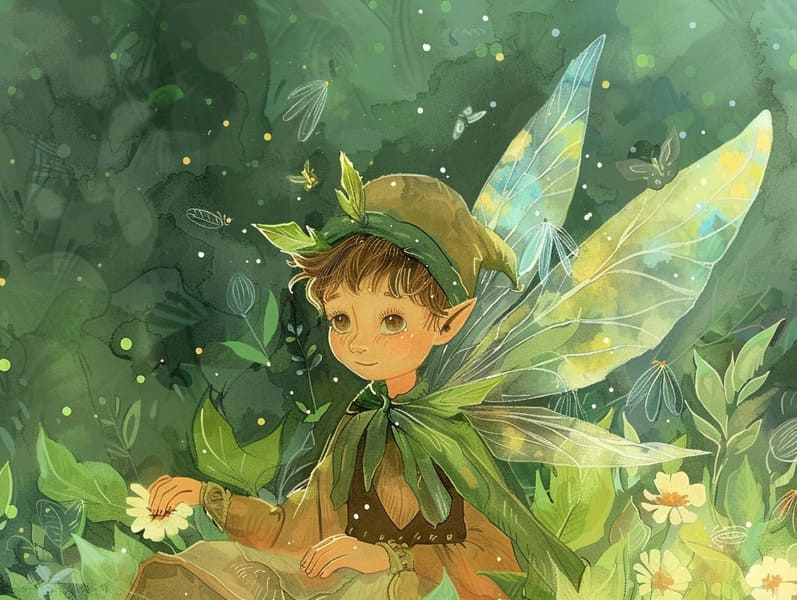The Journey of Old Fairy Tales with the Unending Beauty.
The Journey of Old Fairy Tales with the Unending Beauty.
Blog Article

Legendary fairy tales have legendary status. These narratives have been recounted from one generation to the next ages before they were ever recorded. They emerged from a variety of civilizations, including Eastern traditions. They were initially passed along among grown-ups, often carrying themes and messages concerning the societal norms and beliefs of the time.
The famous Grimm duo, Jacob and Wilhelm, were among the first to assemble many of these beloved fairy tales. Their anthology, "Grimm's Folk Tales," included narratives like "Cinder Maid," "Little Brother and Little Sister," and "Snow White," which have since become mainstays in the world of beloved fairy tales. Similarly, the Danish author's enchanting stories, such as "The Mermaid's Tale," and "The Story of the Ugly Duckling," have won hearts worldwide, guaranteeing their place in the pantheon of famous fairy tales.
Despite their age, traditional fairy tales remain as significant as ever, especially as nighttime stories for kids. These charming stories are now available in numerous formats, including artistically illustrated books, fantastical animations, and internet fairy tales.
Their continued relevance can be ascribed to several enchanting factors:
Moral Lessons: Timeless fairy tales often provide important moral lessons. Tales like "The Tale of the Boy Who Cried Wolf" teach the significance of integrity, while "The Race of the Tortoise and the Hare" illustrate the merits of determination and unpretentiousness. These stories offer little ones clear distinctions between virtue and vice, developing their moral compass in a tender yet important way.
Empathy and Understanding: Timeless fairy tales frequently portray figures facing problems and hurdles, provoking young readers to feel with their struggles and applaud their triumphs. For instance, "The Story of Beauty and the Beast" emphasizes the benefit of seeing beyond the surface to see the inner self of a individual, advancing insight and awareness.
Cultural Insights: Many classic fairy tales are saturated in the cultural contexts from which they were born. Immersing in these stories can provide intriguing perspectives into different backgrounds, strengthening a sense of world understanding and knowledge.
Fantasy and Imagination: The imaginative elements in ancient fairy tales—fairy godmothers—inspire children’s dreams. These narratives move readers to fantasy realms, kindling inventive dreams and a sense of delight that endures a lifetime.
Traditional fairy tales are not only entrancing but also informative. They work as fascinating tools in building various mind and heart abilities in kids. When fairy tales are told out loud, they boost language proficiency by bringing new language items and complicated sentence structures. This practice also fosters auditory perception and mental focus, as young readers follow the story, looking forward to see what happens next.
Furthermore, reflecting on the themes and characters of traditional fairy tales can improve analytical skills and thinking skills. Children are educated to identify patterns, foresee events, and understand cause and effect. These analyses also advance young ones say their thoughts and feelings, advancing their emotional intelligence.
In today’s electronic age, the presence of internet fairy tales has made these narratives more available than ever. Websites and programs provide extensive collections of classic fairy tales that can be seen or listened to anytime, anywhere. Fairy tales recited are particularly widespread, making available an delightful method for children to enjoy these fantastical tales. Sound books and spoken videos carry characters and settings to life, often paired with enchanting melodies and music that elevate the storytelling journey.
The enduring charm of ancient fairy tales lies in their ability to modify to changing times while keeping hold of their essential themes. Contemporary retellings of these stories often include more representative protagonists and modern settings, making them accessible to today’s audience. However, the central morals of guts, humanity, and even-handedness remain unchanged, continuing to impact young readers of all ages.
Traditional fairy tales also offer a sense of comfort and closeness. They make available a neat narrative with a apparent beginning, middle, and end, often ending with the termination of conflicts and the triumph of justice over injustice. This consistency can be calming for young ones, introducing a sense of solidity in an inconstant world.
Classic fairy tales continue to spellbind and coach new generations, maintaining their allure and pertinence in modern society. As nighttime stories for kids, click here they afford a perfect blend of captivation and insight, aiding moral values, empathy, and creativity. The presence of digital fairy tales and the well-liked nature of fairy tales narrated certify that these classic narratives remain acquirable to new generations.
By holding onto and releasing these narratives, we continue to acknowledge the rich tapestry of legends and cultural heritage. Whether you are reading a vividly illustrated book, exploring a internet collection, or listening on an sound book, the appeal of bedtime fairy tales is always within reach. These fairy tales remind us of the consistent strength of narratives and its ability to join us across generations and cultures.
If you are delving into a vibrantly illustrated book, discovering a electronic collection, or listening via an read-aloud story, the grace of Grimm's fairy tales is always within reach.
These fairy tales point out of the ageless magic of tales and its ability to join us across time and space, making a tie that enchants and educates alike.